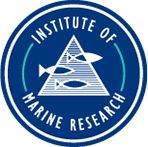How can multi-institutional cooperation contribute to biodiversity protection in the marine areas beyond national jurisdiction?
The development of a new international legally binding instrument under the United Nations Convention on the Law of the Sea (UNCLOS) on the conservation and sustainable use of marine biological diversity of areas beyond national jurisdiction (BBNJ) continued with the third session of an Intergovernmental Conference – referred to as BBNJ IGC3 – from 19 to 30 of August 2019 at the United Nations Headquarters in new York.
 Art installation outside the United Nations Headquarters in New York during the BBNJ IGC3 ©IISD/ENB | Francis Dejon |
As with previous conferences, the Food and Agriculture Organization of the United Nations (FAO) organized side events during the BBNJ IGC3. One of them, under the theme of Science to Policy in Practice: multi-institutional collaboration in the ABNJ washeld by the EAF-Nansen Programme, in collaboration with the SponGES Initiative, the South East Atlantic Fisheries Organization (SEAFO), National Marine Information Research Centre (NatMIRC) in Namibia, and the Fisheries and Oceans Department in Canada.
Based on the examples from the EAF-Nansen Programme and the SponGES project, this side event demonstrated how multi-institutional cooperation can generate research opportunities and how these types of arrangements have informed management processes and led to management decisions on biodiversity protection in fisheries. Current and possible science-to-policy pathways for the areas beyond national jurisdiction (ABNJ) were discussed, as well as the importance of capacity development and knowledge transfer. With a focus on biodiversity and fisheries, participants provided practical examples from their past experiences with research cooperation and how it led to the creation of spatially protected areas, such as vulnerable marine ecosystems.
 Flyer for the side event Science to Policy in Practice: Multi-institutional Collaboration in the ABNJ © FAO |
"The experiences shared here at this side event, provides good examples of how well designed project activities can stimulate multi-institutional cooperation", said Merete Tandstad, the coordinator of the EAF-Nansen Programme. "Not only has this been valuable for partners involved, an added benefit is that the results and information generated from our activities has proven to be useful in regional decision making processes, such as those carried out by Regional Fisheries Management Organizations, which have led to improved fisheries management in the ABNJ", she continued.
Gabriella Bianchi, Research Coordinator at the Institute of Marine Research in Norway (IMR), moderated the event, and Vera Agostini, Deputy-Director of the Fisheries and Aquaculture Department at FAO, made opening remarks, emphasizing the importance of sharing lessons learned and perspectives among all key stakeholders. Experiences from the participating organizations with multi-institutional collaboration, including through projects were presented by Lizette Voges, Executive Secretary of SEAFO, Paulus Kainge, Chief Scientist at the National Marine Information Research Centre in Namibia, and Ellen Kenchington, Research Scientist at the Fisheries and Oceans Department in Canada. Finally, Merete Tandstad highlighted capacity development opportunities for the ABNJ.
A second side event - RFMOs: Continuing Progress in the 21st Century - was organized by the Common Oceans ABNJ Program in collaboration with the International Commission for the Conservation of Atlantic Tunas (ICCAT), the Northeast Atlantic Fisheries Commission (NAFO) and the North Atlantic Fisheries Commission (NEAFC). This session provided a forum for discussion about the role of the 13 tuna and deep-sea Regional Fisheries Management Organizations (RFMOs) around the world, and how lessons learned can help shape their future actions.
In total, there will be four sessions of the BBNJ IGC with the final meeting taking place in March-April 2020. Here is a summary of how FAO has engaged in the BBNJ process so far:
BBNJ Intergovernmental Conference (session 1-3, 2018-2019)
- Friends of BBNJ Capacity Development, informal meeting of a BBNJ Capacity Building Group organized by the Global Ocean Forum (GOF), executing partner of the Common Oceans ABNJ Capacity Project (during third session in August 2019)
- BBNJ Capacity Development in the Context of Climate Change: Possible Modalities for Implementing BBNJ Capacity Development Regarding Area-based Management, Environmental Impact Assessment and Marine Genetic Resources, side event organized by the Common Oceans ABNJ Capacity Project (during second session in March 2019)
- Deep-sea sponges and other biodiversity in the Areas Beyond National Jurisdiction (ABNJ): advances in research and information and implications for management, side event co-organized by the Common Oceans ABNJ Deep Sea Project (during first session in September 2018)
- 10 Years of the FAO Deep Sea Fisheries Guidelines, side event organized by the Common Oceans ABNJ Deep Sea Project (during first session in September 2018)
- Options on Approaches, Modalities and Strategies on Capacity Development for a New International Agreement on Marine Biodiversity Beyond National Jurisdiction, side event organized by the Common Oceans ABNJ Capacity Project (during first session in September 2018)
Organizational Meeting of the BBNJ Intergovernmental Conference (April 2018)
- Capacity Building as a Key Aspect of a New International Agreement on Marine Biodiversity Beyond National Jurisdiction and Options on Approaches, Modalities and Strategies, side event organized by the Common Oceans ABNJ Capacity Project
BBNJ Preparatory Committee (four sessions, 2016-2017)
- Capacity Development in Areas Beyond National Jurisdiction: Experiences, Lessons and Possible Ways Forward, side event organized by the Common Oceans ABNJ Capacity Project (during fourth session in July 2017)
- Exploring a new instrument through the lens of Regional Fisheries Management Bodies (including Regional Fisheries Management Organizations), side event organized by the Common Oceans ABNJ Tuna Project (during fourth session in July 2017)
- Existing International Legal and Policy Instruments related to Deep-Sea Fisheries and Biodiversity Conservation in the ABNJ, side event organized by the Common Oceans ABNJ Deep Sea Project in collaboration with FAOs Deep Sea Programme and the EAF Nansen Programme (during third session in March 2017)
- Ocean Scale Science for Effective Marine Governance, side event co-organized by the Common Oceans ABNJ Capacity Project and the ATLAS project on the High Seas (during third session in March 2017)
- Fisheries and Biodiversity and Existing Instruments and Management Tools with RFMOs (GFCM, NEAFC), CBD and ICFA, side event organized by the Common Oceans ABNJ Deep Sea Project in collaboration with FAOs Deep Sea Programme and the EAF Nansen Programme (during second session in August 2016)
- Capacity Development for Area-Based Management in Areas Beyond National Jurisdiction: Needs, Experiences, Options and Opportunities, side event organized by the Common Oceans ABNJ Capacity Project (during second session in August 2016)
- Deep-sea Resources and VMEs in the Southeast Atlantic – a Research Experience from a Collaborative Survey with the R/V Dr Fridtjof Nansen, side event organized by the Common Oceans ABNJ Deep Sea Project in collaboration with FAOs Deep Sea Programme and the EAF Nansen Programme (during first session in March 2016)
- Regional and National Perspectives on Area-Based Management and Capacity Development Needs in Areas Beyond National Jurisdiction (ABNJ): Examples from Africa, Asia, Latin America and the Caribbean, and the Pacific Islands, side event organized by the Common Oceans ABNJ Capacity Project (during first session in March 2016)
Informal Working Group on BBNJ (2015)
- Capacity Development and ABNJ: Regional and National Perspectives – Examples from Africa, Latin America and the Caribbean, Asia and the Pacific Islands, side event organized by the Common Oceans ABNJ Capacity Project (during 9th Meeting of the UN Ad-Hoc working group in January 2015)
- Working Group on the VME Database, side event organized by the Common Oceans ABNJ Deep Sea Project in collaboration with FAOs Deep Sea Programme and the EAF Nansen Programme (during 9th Meeting of the UN Ad-Hoc working group in January 2015)
The EAF-Nansen Programme "Supporting the Application of the Ecosystem Approach to Fisheries Management considering Climate and Pollution Impacts" is an initiative to support the implementation of the ecosystem approach in the management of marine fisheries. Its aim is to promote sustainable utilization of marine living resources and improved protection of the marine environment. The program is executed by FAO in close collaboration with IMR in Norway, and funded by the Norwegian Agency for Development Cooperation (Norad).
For more information, please contact:
 |
 |



